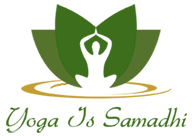Whether you teach yoga for a living or just as a hobby, it’s important to stay calm and collected in the face of potential challenges. When things don’t go according to plan, using these tips of how to keep calm will help you remain patient and focused on teaching your students.
Yoga and Meditation
Yoga and meditation are two great ways to relax and de-stress. Here are a few things you can do to help keep calm each time you teach yoga or meditation:
1. Choose a calming music track for your class. This can help to set the tone for the class and help to relax students.
2. Make sure your students are properly clothed and hydrated before class. This will help them to feel comfortable and relaxed in class.
3. Adjust your teaching style based on the individual students in your class. Some students may need more encouragement than others, so be sure to adjust your approach accordingly.
By following these simple tips, you can help to keep your students calm and relaxed during each yoga or meditation class.
Teaching Yoga in Your Own Way
When you are teaching yoga, it is important to remember that each student is different and will respond differently to the same poses. This means that you should never force a student into a pose if they do not feel comfortable doing it. Instead, offer support and guidance while they experiment with the pose themselves.
It is also important to remember that yoga is not about achieving a certain level of perfection. If you find yourself getting frustrated with a student, try to calm down and focus on being patient and compassionate. You can help your students by setting an example of patience and restraint.
How to Keep a Cool Temper
Keeping a cool temper during yoga class can be difficult, but it’s important to remember that the class is not a competition. There is no need to be constantly competing with your classmates or trying to outdo each other.
Remember that yoga is meant to be fun and relaxing. If you find yourself getting frustrated or angry, take a few deep breaths and try to calm down. Practicing yoga in a calm and peaceful manner will help you to enjoy the class more and make it easier for your classmates as well.
Breathing Technique
When you are teaching yoga, it is important to keep your composure. If you can calm yourself and stay in control, your classes will be much more enjoyable for everyone involved.
One way to help keep your composure is to use a breathing technique. When you are stressed, your breathing becomes shallow and rapid. By practicing a regular breathing technique, you can control the way that your breathing affects your mood.
Another way to stay in control during a yoga class is to focus on your body. When you are practicing yoga, pay attention to where you are placing your hands and feet. This will help you stay focused on the poses and avoid getting lost in the moment.
Stepping Out of the Triangle
When you start teaching yoga, it can be easy to get caught up in the excitement of it all. But remember to take a breath and step out of the triangle.
The triangle is one of the most common poses in yoga. But it can also be one of the most dangerous. When you’re in the triangle, your body is in a vulnerable position. You’re at risk of injury if you fall or if someone tries to push you from behind.
To stay safe in the triangle, always keep your feet planted firmly on the ground. And never let anyone push you from behind. Instead, invite them into the pose with a welcoming gesture. If they don’t want to participate, that’s okay too. Just stay aware and cautious around this pose.
Poses for Inner Strength and Calmness
If you’re feeling overwhelmed by the challenge of teaching yoga, don’t worry! There are certain poses for inner strength and calmness that can help you feel more at ease.
One pose that is especially helpful for reducing stress and anxiety is the cat-cow pose. This pose is often used to treat conditions like back pain and neck pain. In cat-cow, you sit with your spine straight and your knees bent to the floor. You then lift one leg up so that your ankle is resting on your opposite thigh. This stretch will help to release tension in your back and neck.
You can also try the camel pose for inner strength and calmness. In camel, you lie flat on your back with your palms flat on the ground beside you. Then, you lift your hips and legs off the ground until they are parallel to the ground. This pose is great for relieving stress and tension in the shoulders, neck, and lower back.
By using poses like these, you can help to reduce stress and anxiety while teaching yoga.
Achieving Peace and Harmony
When you are teaching yoga, it is important to maintain a calm and peaceful environment. Here are a few things that you can do to help achieve this goal:
1. Establish guidelines and expectations with your students early on in the class. This will help them to understand what is expected of them and help to ensure that everyone is having a good time.
2. Make sure that the room is clean and tidy before beginning class. This will help to create an atmosphere of peace and tranquility.
3. Avoid talking too much during class. This will help to keep the class calm and focused.
4. Do not force your students to do anything that they do not want to do. This will only create tension and conflict.


Your writing awakens the mind and softens the heart — a rare and powerful combination.